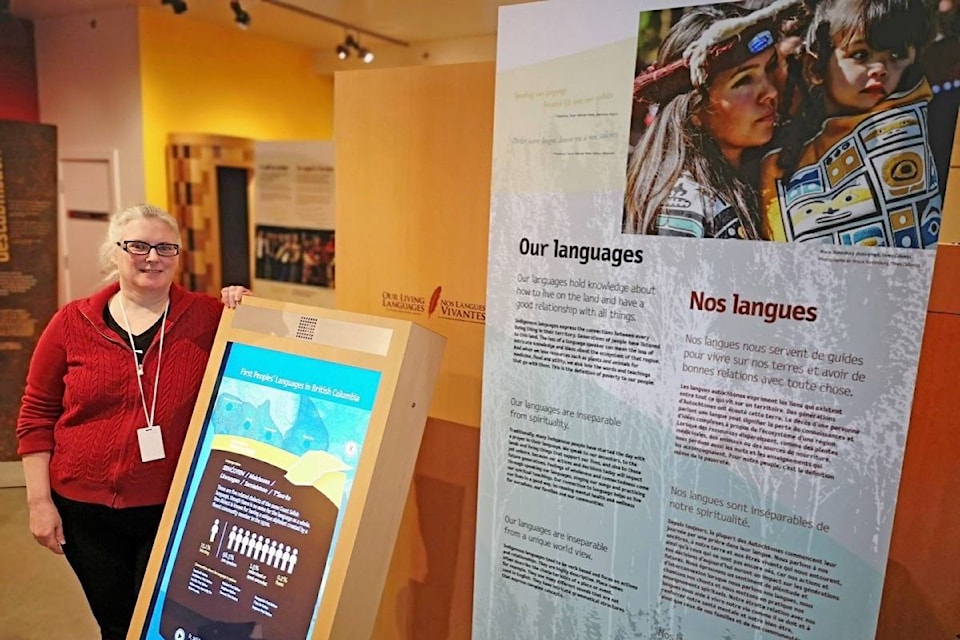Visitors to White Rock Museum & Archives’ newest exhibit won’t leave the building fluent in a new language, although they could pick up a word or two in another tongue while inside.
More likely, curator Charlene Garvey hopes, is that Our Living Languages: First Peoples’ Voices in B.C. inspires an appreciation for the state of Indigenous languages spoken in the province.
The exhibit, on loan from the Royal BC Museum in Victoria and opened Tuesday (Jan. 21), is an interactive look at what First Nations communities throughout B.C. are doing to help 34 distinct languages survive.
It gives people “a chance to listen to the different languages and also just to recognize how diverse this area was,” Garvey said Friday.
Developed in honour of UNESCO’s International Year of Indigenous Languages in 2019, the exhibit “celebrates the resilience and diversity of Indigenous languages in the face of change” through audio and video stations, including the ‘Cradle of language,’ where visitors can sit for a time and listen to words and song.
“When you actually sit in it, it surrounds you,” Garvey said.
In a news release, Garvey said languages, “especially the languages we grow up with, are powerful and potent markers of identity and culture.”
B.C. is one of the planet’s most linguistically diverse regions, the release – which echoes information on the Royal BC Museum website regarding the permanent exhibit of the same name – adds, describing the province as a linguistic “hotspot” for First Nations languages.
The 34 unique languages spoken among the province’s 203 First Nations communities represent 60 per cent of all First Nations languages in Canada.
Garvey, who took over the curator position at the White Rock Museum last month, said the diversity speaks to the access that the different communities had to natural resources. At the same time, it has added to the challenge of saving them all.
“I wouldn’t be surprised if some were lost,” she said.
The exhibit is the first at the museum since Garvey took over. Trained in anthropology at the University of B.C., she said her own First Nations expertise leans more towards art, including basketry and the challenge of passing down those skills. They continue to thrive in some communities, she said, noting her own studies of them took her to the west coast of Vancouver Island.
Garvey said she spent 17 years in Alberta, working with the Edmonton-based Alberta Museums Association as well as seven years with the provincial government, before returning to the Lower Mainland four years ago to be closer to her parents. She got involved with the White Rock Museum at that time as a volunteer.
Curating, Garvey said, is her “first love,” and she is looking forward to organizing her first exhibit, about the pier, which will succeed Our Living Languages.
READ MORE: VIDEO: White Rock pier destroyed by storm, stranded man rescued
“I’m really excited to be rolling up my sleeves,” she said.
Our Living Languages continues at the museum through April 28. An opening reception is planned for Jan. 29.
tholmes@peacearchnews.com
Like us on Facebook and follow us on Twitter
